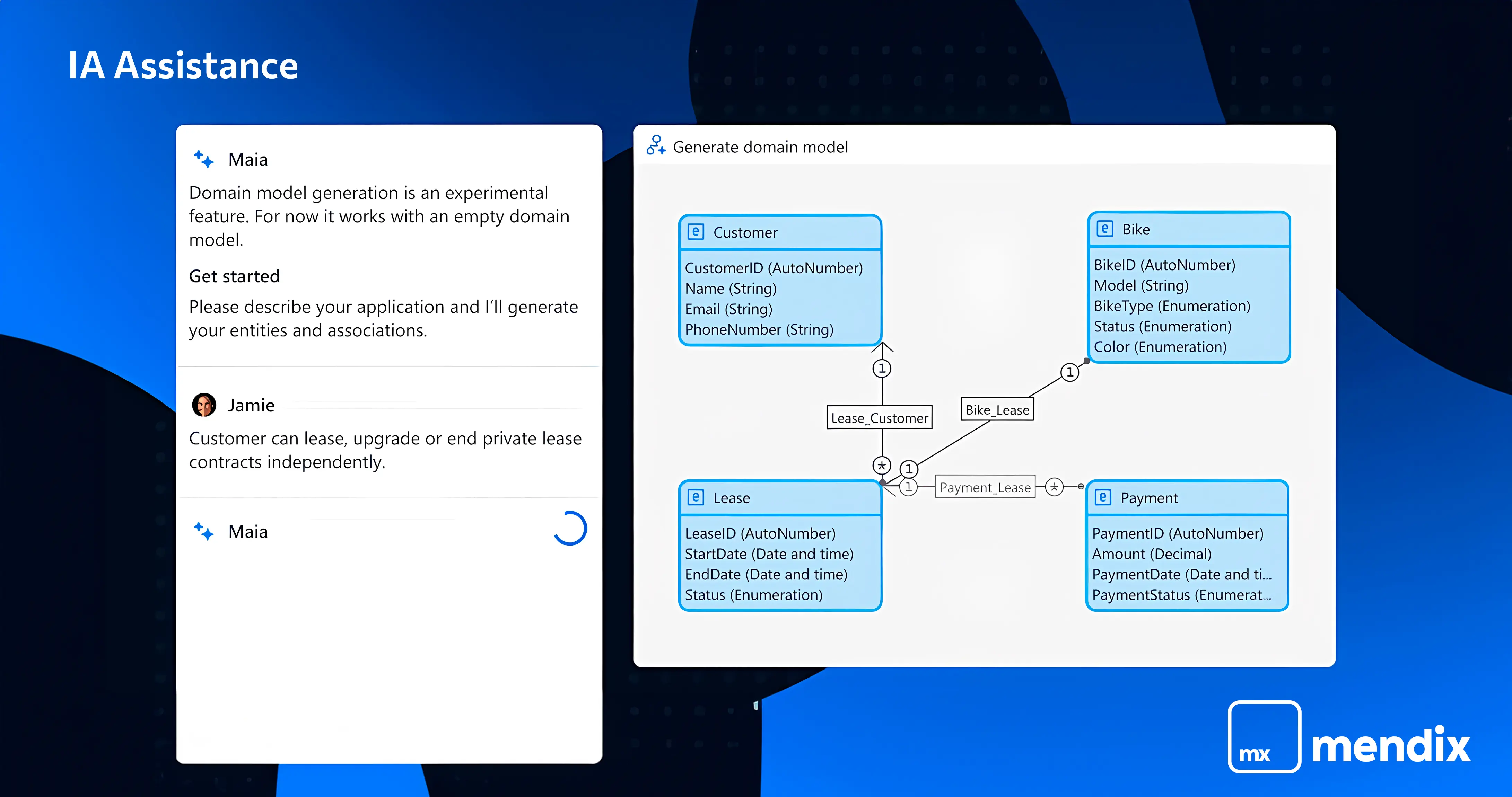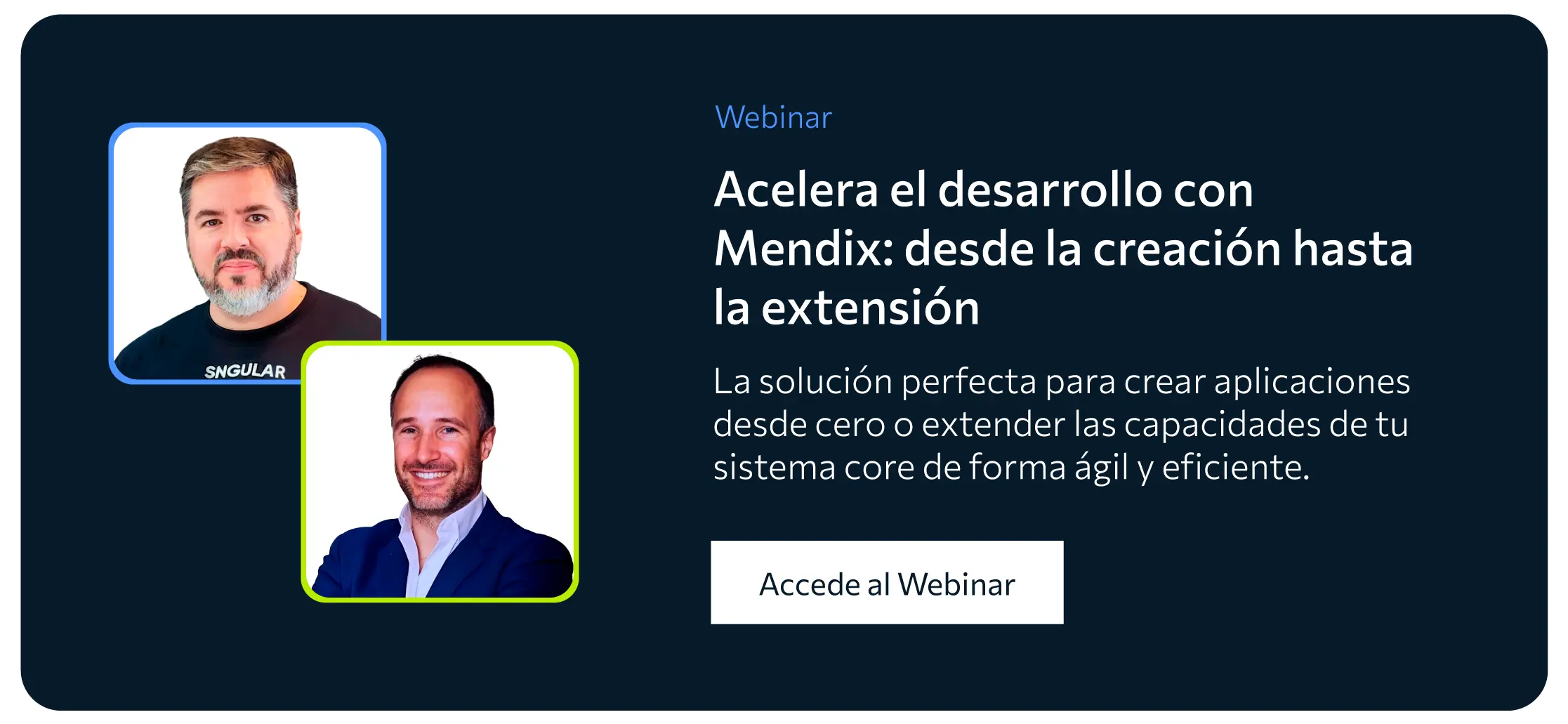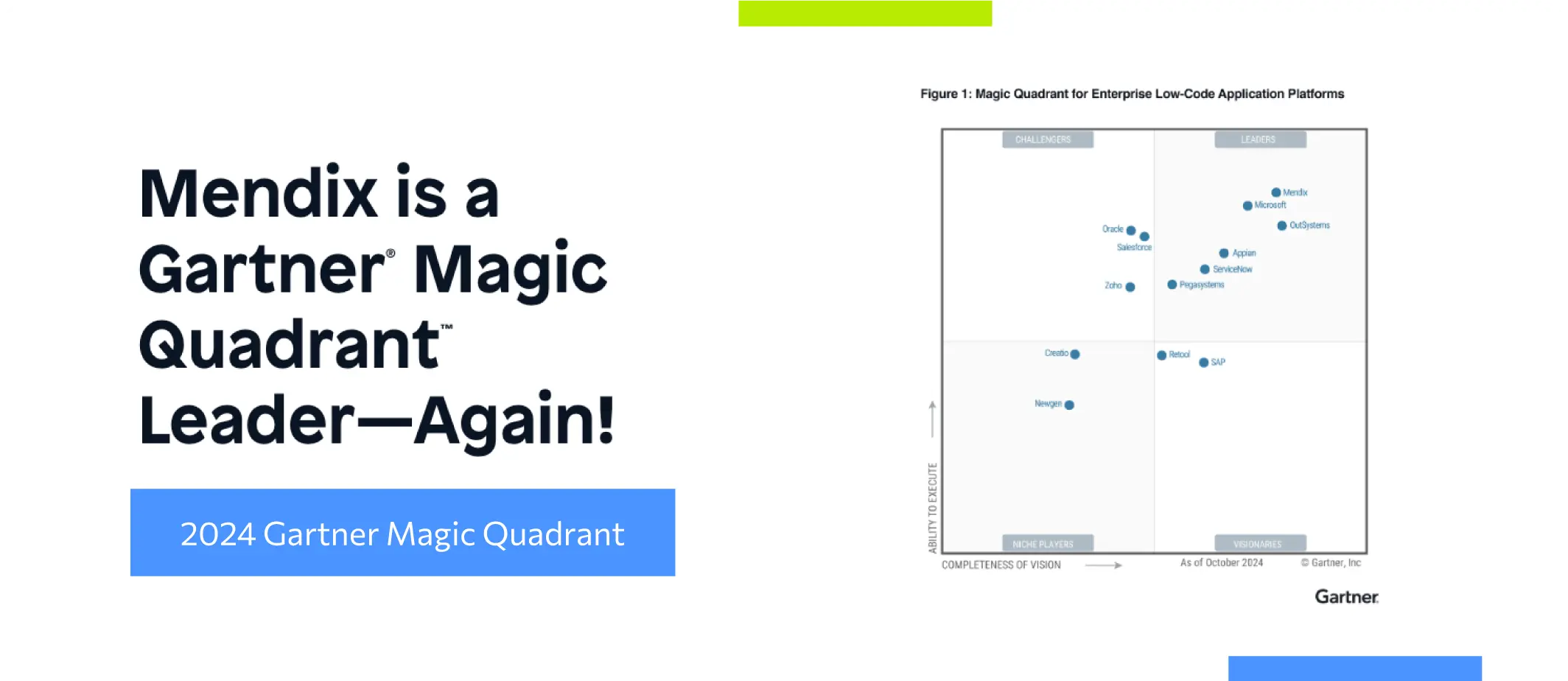
Extend Functionality and Accelerate Development with Mendix
January 13, 2025
The decision between developing on a legacy system or building one from scratch is a common strategic dilemma in software development. Both options have advantages and challenges that must be carefully evaluated based on business objectives, the current state of technological infrastructure, and available resources. However, we cannot afford to become paralyzed in this process. Innovation is an imperative need, and our applications must have an agile time-to-market to respond quickly to market demands.
Legacy systems, while essential for the operation of many organizations, often represent a hurdle to technological evolution. Their maintenance is costly, extending their functionalities can be complex, and their integration with modern solutions is often limited. These systems, designed for contexts vastly different from today, hinder the agility needed to compete in dynamic markets.
On the other hand, building a system from scratch is not always the ideal solution. Traditional development projects often require significant investments in time and money, with long delivery timelines and risks that may outweigh the anticipated benefits. This model contrasts with more agile and modern approaches, such as low-code development, which allows for the rapid and efficient creation of customized applications, reducing costs and simplifying processes.
Success is not solely about choosing between maintaining or replacing systems but rather about how the need for continuous innovation is addressed. The key is to implement solutions that extend existing capabilities, modernize processes, and deliver business value at the speed required by today’s market. If you are interested in this topic, you can learn more about accelerating development and overcoming these barriers in this webinar.
Extending functionalities and overcoming legacy limitations
Adopting a strategic approach to extend the functionalities of existing systems is the solution many organizations need to overcome the burden of legacy systems and accelerate technological development. Instead of completely replacing their technological infrastructure, companies can opt for a model that builds on their current base, avoiding significant disruptions, reducing costs, and shortening implementation times.
What is the centric approach?
The Centric approach is based on creating a “functional belt” around existing core systems. Rather than attempting to directly modify the legacy system, this strategy allows for the development of additional applications and functionalities that complement and extend the capabilities of the technological core. It’s an agile way to maintain the stability of the main system while innovating in its surroundings.
With this strategy, companies can benefit from the best of both worlds: leveraging the strengths of their existing infrastructure while adding value layers using modern technologies. For instance, by creating applications that automate specific processes, optimize workflows, or enhance user experience.
Adopting a Centric approach not only overcomes the inherent limitations of legacy systems but also relieves companies of the heavy burden these systems often represent. By extending functionalities without compromising the core system’s stability, organizations can respond more quickly and efficiently to market changes.
Additionally, this strategy lays the groundwork for a gradual transition to more modern technologies, allowing businesses to innovate at their own pace and minimize the risks associated with large-scale technological transformations.

Mendix: A strategic solution to extend technological capabilities
On the path to agile innovation, low-code tools like Mendix have become key allies for organizations looking to maximize productivity and extend the capabilities of their core systems. Mendix is not just a development platform; it is a strategic framework that enables the rapid and efficient creation of customized solutions, whether developing applications from scratch or extending the functionalities of existing systems.
Mendix offers an agile and efficient way to overcome the limitations of legacy systems. Thanks to its ability to integrate with core systems like ERP, CRM, or transactional applications, this platform allows businesses to build a “functional layer” around their technological core. This opens the possibility of adding value to the business without the need for costly replacements or reconstructions of existing infrastructure.
With Mendix, companies can develop applications that automate processes, enhance user experience, and optimize workflows, all within an environment that fosters collaboration between technical and non-technical teams. Moreover, its compatibility with any hyperscaler and its focus on security and flexibility make it an ideal solution for today’s business challenges.
The true strength of Mendix lies in its ability to accelerate development and reduce delivery times. By combining low-code development with artificial intelligence, this platform allows companies to double the speed of solution creation, enabling a competitive time to market to meet market demands.
Additionally, Mendix can be the key to transforming organizational productivity by acting as the “functional belt” that complements systems like SAP, Oracle, or any core technology. Its ability to adapt to the specific needs of each business makes it a versatile and high-impact tool.
Case studies: Transformation through Mendix
Companies that have integrated Mendix as their strategic platform have achieved outstanding results, including drastic reductions in development times, greater technological adaptability, and the extension of capabilities without significant operational disruptions. Some practical examples include: • Process Automation and Optimization: Management of resource reservations (rooms, parking spaces, devices), approvals (travel, expenses, procurement cycles), and inspections and audits, improving control and traceability. • Operational Extension of ERP and Corporate Applications: Creation of additional functionalities such as time entries, approval workflows linked to key entities, and management of electronic signature cycles. • IoT-Based Solutions: Integration and management of IoT devices, real-time data analysis, and automation of related tasks. • Legacy Application Replacement: Migration of obsolete systems to advanced technologies, ensuring operational continuity and fostering innovation. • Interfaces for AI Solutions and Data Analysis: Development of interactive frontends with AI models, facilitating the configuration of machine learning rules and efficient data analysis. • Document Management Transformation: Digitization of departmental processes, optimizing collaboration and increasing productivity and security.
Maia: AI-Driven logical recommendations for smarter development
In the pursuit of accelerating innovation and optimizing development processes, Maia, the AI integrated into Mendix, acts as a catalyst for change. Designed to provide logical and personalized recommendations in real time, Maia serves as a proactive assistant that helps teams tackle projects with greater precision and efficiency.
One of Maia’s most notable features is its ability to anticipate needs and propose solutions before problems arise. From automating repetitive tasks to suggesting optimal configurations for critical components, Maia reduces errors and allows teams to focus on strategic initiatives. Its ability to facilitate collaboration between technical and non-technical teams is key to translating complex problems into actionable solutions.
With Maia, companies can double their development speed, reduce delivery times, and ensure the creation of high-quality applications. This level of innovation not only transforms development processes but also strengthens competitiveness in dynamic markets. With tools like Maia, the future of low-code development is more efficient, intelligent, and accessible than ever.

Our latest news
Interested in learning more about how we are constantly adapting to the new digital frontier?

Insight
December 10, 2024
Groundbreaking technologies today that will reshape the innovation landscape in 2025

Interview
October 2, 2024
Telice reduces order management time from 21 days to 24 hours with Power Platform

Tech Insight
September 15, 2024
Managing System State in Contract Testing with Pact

Tech Insight
September 12, 2024
Process transformation with Power Platform


